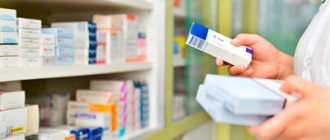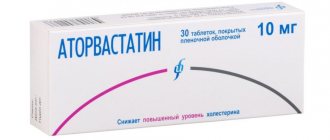In the 20th century, when medicine made significant progress in the diagnosis and treatment of many chronic diseases, a person most often had one of them and had it treated by a specialized specialist. And so far, most clinical recommendations are intended to treat one chronic disease and do not take into account the presence of other concomitant ones.
Therefore, if a person has several diseases, each specialist he comes to prescribes treatment according to his profile and without taking into account other diseases. As a result, people are forced to take 8 or more medications at the same time, which, instead of recovery and improvement of the condition, can cause its deterioration. The number of such patients has increased significantly recently, and these are not only those who are over 75 years old.
Treating people with a “bouquet” of diseases is a difficult task, since diseases can mutually aggravate each other, and medications for treating one disease can worsen the course of another. To prevent this from happening, doctors from various specialties join forces and treat the patient together. And most often this is a gastroenterologist and cardiologist.
Why are cardiovascular and gastroenterological diseases often combined?
The first reason is that diseases of the gastrointestinal tract and cardiovascular system are among the most common. According to statistics, every fourth person in economically developed countries has some kind of heart or vascular disease; the most common are coronary heart disease and hypertension. On the other hand, there is a constant increase in the number of people suffering from diseases of the gastrointestinal tract (GIT), and in particular diseases of the esophagus, stomach, liver, biliary system and intestines.
The second reason is common risk factors. These include:
- Overweight and obesity.
- Smoking and alcohol abuse.
- Unhealthy and unbalanced diet.
- Insufficient consumption of vegetables and fruits.
- Sedentary lifestyle.
- Increased level of total blood cholesterol (above 5 mmol/l).
- Elevated sugar levels (above 5.5 mmol/l.
- Increased level of low-density lipoprotein LDL (above 2.5 - 3 mmol/l).
The third reason is that over a long period of time, one of the diseases can cause another and vice versa. For example, in chronic cardiovascular failure, the liver suffers, and non-alcoholic fatty liver disease increases the risk of developing heart and vascular diseases by 64%.
The fourth reason is that chronic use of cardiovascular drugs can lead to significant deterioration in gastrointestinal health.
Therefore, people with a combination of hypertension, coronary heart disease, chronic heart failure and diseases of the esophagus, stomach, intestines and liver require joint treatment by a cardiologist and gastroenterologist with the selection of drugs that have minimal damaging effects on the gastrointestinal tract and the additional prescription of gastroprotectors and hepatoprotectors.
Causes of gastritis
The main causes of gastritis are:
- poor nutrition;
- hasty eating and poorly chewed food or dry food;
- eating food that is too hot or too cold;
- eating savory foods (mostly spicy and highly salted);
- smoking;
- alcohol consumption;
- stress;
- infection with the microbe Helicobacter pylori;
- chewing gum on an empty stomach.
What diseases of the cardiovascular system do cardiologists treat?
The treatment of cardiovascular diseases is carried out by various specialists - cardiologists, cardiac surgeons, arrhythmologists, neurologists, rheumatologists, angiosurgeons.
Cardiologists treat patients with damage to the heart and its blood vessels, as well as peripheral artery disease.
Such diseases include:
- coronary heart disease (CHD);
- angina pectoris
- myocardial infarction
- chronic heart failure;
- congenital and acquired heart defects;
- inflammatory lesions of the heart muscle and pericardium;
- cardiomyopathies (hereditary and secondary);
- arterial hypertension (hypertension);
- vascular atherosclerosis;
- disturbances of heart rhythm and conduction.
When to see a doctor
You should consult a doctor if you feel severe pain with gastritis of the stomach, since exacerbation of gastritis can cause a serious deterioration in health with an increase in the area of mucosal damage and transition to an ulcerative state. Gastritis is especially dangerous if there is increased acidity, since the juice tends to corrode the mucous membrane of the organ, resulting in the formation of ulcers. If, based on a number of signs, the patient has identified an exacerbation of gastritis, the symptoms of which are nausea to vomiting, complete loss of appetite, fever up to 39 degrees Celsius and severe pain, you should make an appointment with a specialist as quickly as possible.
Gastritis, the symptoms and treatment of which may vary in adults, is diagnosed by a gastroenterologist. The Center for Modern Medicine JSC "Medicine" (academician Roitberg's clinic) in Moscow offers diagnostic and treatment services for all types of gastritis using modern medical devices and drugs. More complete information on the topic “gastritis and its treatment in adults” can be obtained by clicking on the link. Our clinic is located at 2nd Tverskoy-Yamskaya Lane, building 10, a 5-minute walk from the Mayakovskaya metro station.
Which cardiovascular drugs are gastro or hepatotoxic?
Gastrotoxicity of a drug is an undesirable drug reaction, expressed in damage to the organs of the digestive system and associated with the peculiarities of the mechanism of drug metabolism, as well as the dose and duration of their use. When they talk about hepatotoxicity, they mean the predominant damaging effect of the drug on the liver. However, there are drugs that negatively affect both the gastrointestinal mucosa and liver cells.
Drugs prescribed by a cardiologist that can cause toxic damage to the gastrointestinal tract include antiarrhythmic, antihypertensive, hypolipidemic (to reduce the level of cholesterol, triglycerides, low-density lipoproteins associated with the risk of developing vascular atherosclerosis) drugs, as well as aspirin, used to prevent thrombosis. The main task of a cardiologist when selecting therapy is to take into account the existing gastrointestinal disease and select a drug that has less gastro- and hepatotoxicity. In turn, the gastroenterologist observing the patient can additionally select drugs to protect the gastrointestinal tract.
Symptoms and signs of gastritis
They help identify gastritis symptoms depending on the type of disease:
- acute gastritis begins suddenly, often after food poisoning; sharp pain with gastritis is felt in the solar plexus area. The pain may intensify when taking foods that irritate the gastric mucosa. The main symptoms of gastritis of the stomach: heartburn, vomiting, belching, frequent release of gas, bloating, headache, rapid heartbeat, dizziness, increased salivation or extreme thirst;
- Chronic gastritis is sluggish. If chronic gastritis is diagnosed, the symptoms in adults may vary, but generally this pathology is characterized by belching with a characteristic odor, constant heartburn, a feeling of pain and heaviness, loss of appetite, diarrhea or constipation, coating on the tongue, and weight loss. Due to the fact that the signs of gastritis of the stomach depend on the type of pathology, only a doctor can make an accurate diagnosis. In the chronic form, nutrition plays an important role in gastritis.
Depending on the form and type of gastritis, symptoms and treatment vary significantly, so the best solution for the patient is to immediately consult a doctor.
Are you experiencing symptoms of gastritis?
Only a doctor can accurately diagnose the disease. Don't delay your consultation - call
How to distinguish cardiac pain from non-cardiac pain?
The heart and organs of the digestive system are located quite close to each other, therefore, when pain occurs in the left half of the chest, both a gastroenterologist and a cardiologist are involved in the examination and diagnosis. The complaint of chest pain is one of the most common and alarming symptoms for both the doctor and the patient. Differential diagnosis is most often carried out between gastroesophageal reflux disease (GERD) and angina or coronary heart disease, and in case of an acute painful attack, between exacerbation of GERD and myocardial infarction.
In addition to gastroesophageal reflux disease, chest pain can be caused by
- esophageal spasm;
- reflux esophagitis;
- hiatal hernia (hiatal hernia);
- stomach ulcer;
- biliary or intestinal colic;
- cholecystitis;
- pancreatitis.
In addition, there are cases when a patient has both pathologies: gastrointestinal disease and heart disease. In such cases, it must be taken into account that drugs used to treat coronary heart disease and hypertension have a relaxing effect on the smooth muscles of the esophagus and may lead to aggravation of reflux symptoms.
Diagnosis of gastritis
Today, the main way to determine gastritis is fibrogastroduodenoendoscopy or FGDS, which consists of studying the condition of the inner surface of the stomach using a probe, as well as a biopsy - removing a small fragment of tissue for examination.
FGDS makes it possible not to confuse gastritis and ulcer and to determine the type of disease: erosive or non-erosive.
Also, a gastroenterologist, to make a correct diagnosis, may prescribe the following tests:
- General blood analysis.
- Fecal occult blood test.
- Histological examination of a biopsy specimen of the gastric mucosa.
- Cytological examination of a biopsy specimen of the gastric mucosa.
- Two tests for the determination of H. pylori.
- Blood chemistry.
- General urine analysis.
What diseases of the cardiovascular system and gastrointestinal tract mutually aggravate each other?
The combination of non-alcoholic fatty liver disease (fatty hepatosis) with heart and vascular diseases significantly increases the risk of developing cardiovascular accidents. Cardiovascular disease is the leading cause of death in patients with fatty liver disease.
In people with hypertension combined with non-alcoholic fatty liver disease, hypertension is unstable and may develop a form of hypertension that is resistant to treatment.
Erosive and ulcerative lesions of the stomach and duodenum are quite often complicated when taking drugs to prevent the formation of blood clots in the coronary arteries, which contain acetylsalicylic acid. They are prescribed for the treatment of coronary heart disease, angina pectoris, and myocardial infarction.
Pathological changes in the intestinal microflora are currently considered as an independent risk factor not only for intestinal diseases, but also for the development of lipid metabolism disorders, systemic inflammation, obesity and type 2 diabetes mellitus, which increase the risk of developing cardiovascular diseases and their complications.
Publications in the media
Chronic gastritis is a long-term disease characterized by the development of a number of morphological changes in the gastric mucosa and accompanied by various disorders of its basic functions. Prevalence. 50–80% of the entire adult population, the incidence of chronic gastritis increases with age. Incidence of gastritis and duodenitis: 287.2 per 100,000 population in 2001.
Classification
• By etiological factor • Microbial: Helicobacter pylori, etc. • Non-microbial •• Autoimmune •• Alcoholic •• Post-resection •• Caused by exposure to NSAIDs •• Caused by exposure to chemical agents • Unknown factors, incl. microorganisms.
• By type • Non-atrophic (type B, superficial, diffuse antral, hypersecretory) • Atrophic (type A, diffuse gastric body, associated with B12-deficiency anemia) • Special forms •• Chemical •• Radiation •• Lymphocytic •• Giant hypertrophic ( Ménétrier's disease, adenopapillomatosis) •• Granulomatous •• Eosinophilic •• Other infectious.
• By localization • Antral gastritis • Body gastritis • Pangastritis.
Etiology • Chronic non-atrophic gastritis in 85–90% of cases is caused by Helicobacter pylori • The development of chronic atrophic (autoimmune) gastritis is associated with the genetically determined production of autoantibodies to the lining cells of the gastric mucosa • The most common causes of chemical (reactive) gastritis are bile reflux and long-term use of NSAIDs • The etiology of eosinophilic gastritis is unknown, some patients have a history of bronchial asthma, eczema and other allergic diseases • Granulomatous gastritis is found in 10% of patients with sarcoidosis, 7% of patients with Crohn’s disease, with tuberculosis, mycoses, foreign bodies in the stomach • Etiology of giant hypertrophic gastritis is unknown.
Clinical picture
• Chronic non-atrophic gastritis • The pain syndrome often resembles that of duodenal ulcer (pain in the epigastric region that occurs on an empty stomach, but is usually less intense). The pain can be acute, cramping or aching, not intense; sometimes occur soon after eating • Dyspeptic syndrome - heartburn, sour belching, less commonly nausea, vomiting of gastric contents.
• Atrophic gastritis • Often combined with B12-deficiency anemia, thyroiditis, thyrotoxicosis, primary hypoparathyroidism • Sometimes the disease is latent • The most common manifestations are heaviness in the epigastric region after eating, a feeling of overeating, fullness of the stomach, belching of food and air, unpleasant taste in the mouth , loss of appetite, possible flatulence, unstable stool.
• Chemical (reactive) gastritis • Characterized by a triad of symptoms: pain in the epigastric region, intensifying after eating, vomiting with bile, bringing relief, weight loss.
• Giant hypertrophic gastritis • Pain in the epigastric region of varying intensity, often aching, occurs after eating and is accompanied by a feeling of heaviness in the stomach • Vomiting and diarrhea are possible; appetite is often reduced, sometimes even to the point of anorexia • In most patients, body weight decreases (by 10–20 kg) • In 25–40% of patients, peripheral edema is detected due to significant loss of protein with gastric juice (more than 8 g/day) • Gastric bleeding from erosions • Gastric carcinoma develops in 10% of cases.
Diagnostics
• OAC: B12-deficiency anemia in chronic gastritis type A
• Stool analysis: possible presence of hidden blood, as well as undigested food debris with reduced secretory activity of the stomach.
• X-ray examination does not allow diagnosing the main forms of chronic gastritis; but with its help it is possible to identify ulcers, cancer, polyposis, duodenal gastric reflux, giant hypertrophic gastritis, chronic obstruction of the duodenum • Chronic obstruction of the duodenum - delay of the contrast mass in the intestinal lumen for more than 45 s, expansion of the intestinal lumen, the presence of duodenum gastric reflux •• Giant hypertrophic gastritis (Menetrier's disease) - pronounced thickening of the folds of the mucous membrane in a limited area (with a local variant) or throughout the stomach (with a diffuse variant). The stomach wall in the affected area is elastic, peristalsis is visible.
• FEGDS •• Non-atrophic (superficial) gastritis: the mucous membrane is shiny (sometimes with a coating of fibrin), edematous, hyperemic, submucosal hemorrhages •• Atrophic gastritis: the mucous membrane is thinned, pale gray in color, with translucent blood vessels, the relief is smoothed •• Reflux -gastritis: the pylorus is gaping, the gastric mucosa is hyperemic, edematous; bile is present in the stomach •• Giant hypertrophic gastritis: there is a large amount of mucus in the stomach, the mucous membrane is easily vulnerable, erosions and hemorrhages are often found.
• Study of the secretory function of the stomach •• Chronic non-atrophic gastritis, reflux gastritis: the secretory function is normal or increased •• Chronic atrophic gastritis, giant hypertrophic gastritis: the secretory function of the stomach is reduced.
• Detection of Helicobacter pylori •• Invasive methods: it is necessary to perform FEGDS with a biopsy of the gastric mucosa; at least five biopsies are taken (two each from the antrum and fundus and one from the angle of the stomach). To confirm the success of eradication, the study is carried out no earlier than the 5th week after completion of the course of treatment ••• Bacteriological method ••• Histological method (detection of bacteria during microscopic examination of stained preparations) ••• Biochemical method (urease test) •• Non-invasive tests •• •Immunological methods (detection of antibodies to Helicobacter pylori) •••Breath test ••PCR diagnostics in biopsy samples of the gastric mucosa (invasive method) and in the patient’s feces (non-invasive method).
• Detection of antibodies to parietal cells and intrinsic factor and hypergastrinemia are a sign of atrophic autoimmune gastritis.
• Floor manometry of the upper gastrointestinal tract: with reflux gastritis, an increase in pressure in the duodenum to 200–240 mm water column is detected. (normally - 80–130 mm water column).
TREATMENT
Chronic non-atrophic gastritis
• Diet: for hypo- and achlorhydria, diet No. 2 is prescribed, for hyperacid conditions - diet No. 1.
• For gastritis caused by Helicobacter pylori - eradication (course of therapy - 1-2 weeks) •• Triple therapy ••• bismuth tripotassium dicitrate 120 mg 4 times / day for 28 days ••• metronidazole 200 mg 4 times / day in for 10–14 days ••• tetracycline 500 mg 4 times/day for 10–14 days •• Quadra-therapy ••• omeprazole 20 mg 2 times/day ••• tripotassium bismuth dicitrate 120 mg 4 times/day •• • tetracycline 500 mg 4 times a day ••• metronidazole 500 mg 3 times a day.
• In the absence of Helicobacter pylori and increased secretory function of the stomach •• Antacids, preferably non-absorbable, 1-2 hours after meals 3-4 times / day and before bed • Selective m-anticholinergic blockers (pirenzepine - 50 mg 2 times / day) • Blockers Histamine H2 receptors: ranitidine (150 mg 2 times a day orally or intramuscularly), famotidine (20 mg 2 times a day orally or intravenously) •• H+,K+-ATPase blockers (proton pump blockers) ) - omeprazole, rabeprazole 20 mg 2 times / day, lansoprazole 30 mg 2 times / day.
• Drugs that protect (envelop) the mucous membrane •• Sucralfate •• Bismuth tripotassium dicitrate (also has an antimicrobial effect against Helicobacter pylori).
Chronic atrophic gastritis • Drug therapy is carried out only during the period of exacerbation • Replacement therapy for secretory gastric insufficiency: natural gastric juice, pepsidil, hydrochloric acid with pepsin, acidin-pepsin (these drugs are contraindicated in the presence of erosions of the mucous membrane) • Replacement therapy for decreased excretory function of the pancreas glands (cholenzyme, pancreatin + bile components + hemicellulase, pancreatin, panzinorm forte) • Treatment of B12-deficiency anemia • Herbal medicine: herbal remedies that have an anti-inflammatory effect - infusion of plantain leaves, chamomile, mint, St. John's wort, valerian (1 tbsp. per glass of water) orally, 1/3–1/4 glass 3–4 times a day before meals for 3–4 weeks; plantain juice 1 tbsp. or plantaglucide 0.5–1 g 3 times a day • Drugs that improve tissue trophism and enhance reparative processes: nicotinic acid (1% solution IV from 1 to 10 ml for 10 days or IM 3–5 ml 20 days), solcoseryl 1–2 ml IM 20 days, inosine 0.2 g 3 times a day 40 minutes before meals 20–30 days, thiamine, pyridoxine, folic acid • Blockers of central and peripheral dopamine receptors for pain and severe dyspeptic symptoms (see below Reflux gastritis).
Reflux gastritis • Treatment is aimed at normalizing gastrointestinal motility and binding bile acids • To prevent the reflux of duodenal contents into the stomach, dopamine receptor blockers are prescribed (domperidone, metoclopramide, cisapride 10 mg 3 times a day 30 minutes before meals for 2-3 weeks ) • To neutralize bile acids that have a damaging effect on the gastric mucosa, chenodeoxycholic and ursodeoxycholic acids are used • To protect the mucous membrane from bile acids - antacids in the usual daily dose (aluminum-containing antacids have the ability to bind bile acids, so they are more effective).
Giant hypertrophic gastritis • Long-term treatment (2-3 months) • High-calorie, protein-rich diet • Antisecretory therapy • For treatment-resistant hypoproteinemia, repeated bleeding, surgical treatment (gastric resection) is indicated.
ICD-10 • K29 Gastritis and duodenitis
Application. Eosinophilic (allergic) gastroenteritis is a chronic disease characterized by predominantly eosinophil infiltration of the lamina propria of the gastric antrum mucosa, epithelium, pit glands with the formation of eosinophilic abscesses; characterized by damage to the small and large intestines, esophagus; often accompanies allergic diseases. Clinical picture: chronic diarrhea, abdominal pain, nausea, vomiting, weight loss, eosinophilia. Treatment: exclusion of allergy-provoking foods; diet No. 1; GCs provide long-term remission. ICD-10. K52.8 Other specified non-infectious gastroenteritis and colitis.
When is it necessary to consult a cardiologist?
Regular monitoring of heart health is necessary for men after 40 years of age and women after 50 years of age. If there is an increased risk of cardiovascular diseases (with a hereditary predisposition, increased neuropsychic and physical stress, or low physical activity, smoking, increased cholesterol and blood sugar levels, obesity and liver steatosis), preventive examinations begin earlier.
In what cases should you consult a doctor:
- pain, burning or discomfort in the chest (sometimes constant tension in the chest is mistaken for stomach pain);
- shortness of breath and increased heart rate that occur with increased physical activity or at rest;
- feeling of palpitations, interruptions in heart rhythm;
- fatigue, dizziness, fainting;
- decrease or increase in pressure;
- swelling of the lower extremities.
2. Symptoms of the disease
The symptoms of gastritis vary in each individual case, and it may even happen that there are no symptoms of gastritis at all. However, the most common symptoms of gastritis are:
- Nausea or recurrent stomach upset;
- Bloating;
- Abdominal pain;
- Vomiting, including vomiting blood;
- Indigestion;
- Burning in the abdomen, especially between meals or at night;
- Hiccups;
- Loss of appetite;
- Abnormal bowel movements, black tarry stools.
Visit our Gastroenterology page
How to make an appointment with a gastroenterologist
You can make an appointment with a gastroenterologist at our multidisciplinary medical center at 2nd Tverskoy-Yamskaya Lane, building 10 in the following ways:
- use the form on the website;
- use the phone +7 (495) 775-73-60 around the clock.
JSC "Medicine" (clinic of academician Roitberg) also offers services to call a gastroenterologist at home and by phone +7 (495) 775-73-60 around the clock.
JSC "Medicine" (clinic of academician Roitberg) is located a 5-minute walk from the "Mayakovskaya" metro station.









